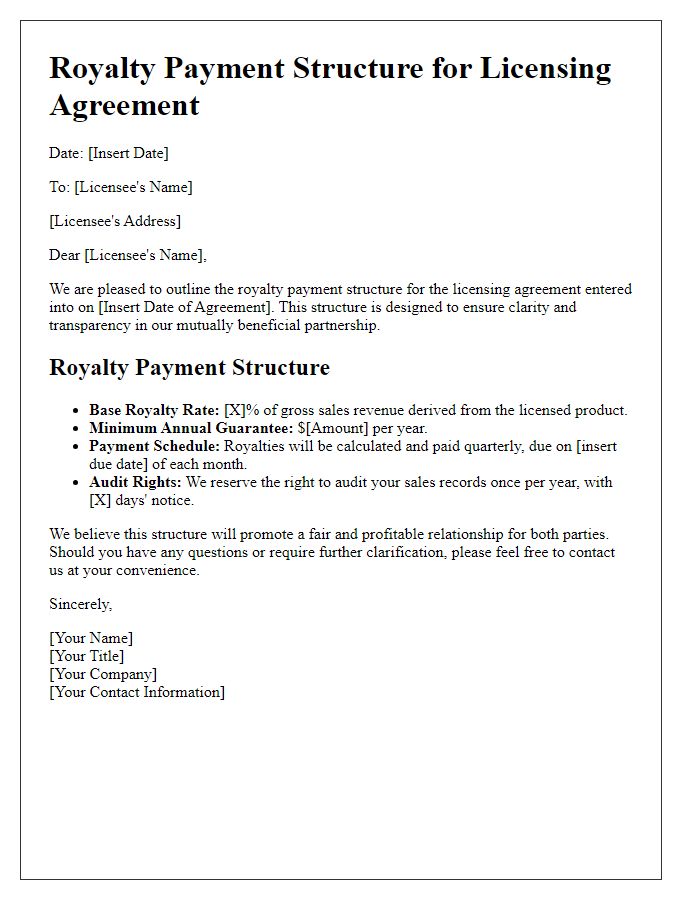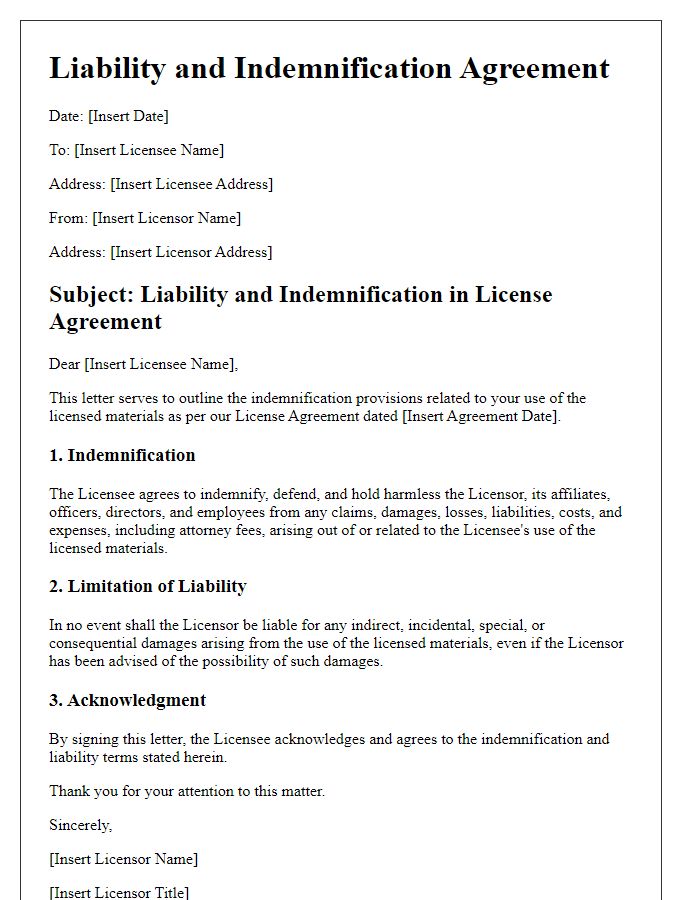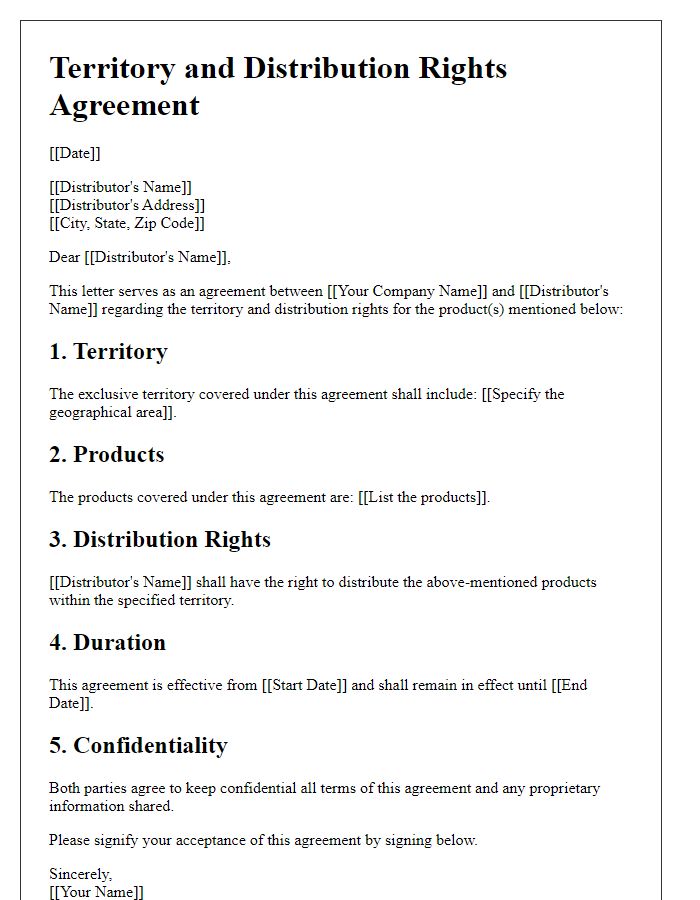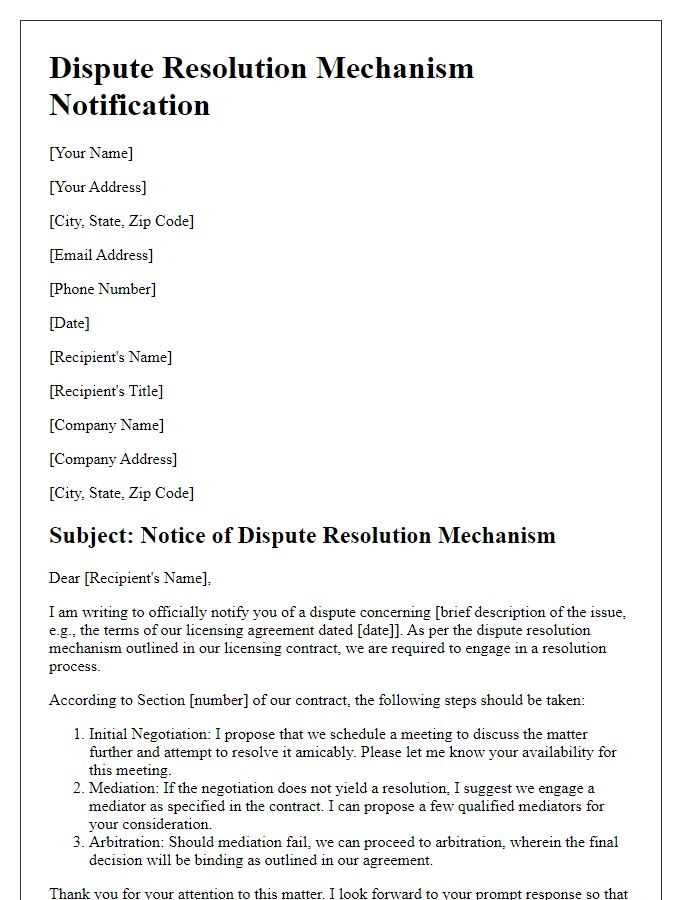When it comes to drafting a license agreement, having the right template can simplify the process and ensure all essential provisions are covered. This guide will walk you through the key elements that should be included, from defining the scope of the license to outlining payment terms and duration. Whether you're a seasoned professional or new to licensing, understanding these provisions is crucial for safeguarding your interests. So, let's dive in and discover how to create a comprehensive license agreement that meets your needs!

Grant of License
A well-defined grant of license section is essential in a license agreement, outlining the permissions and limitations associated with the use of intellectual property. This provision should specify the scope of rights being granted, including whether the license is exclusive or non-exclusive, worldwide or limited to certain territories, and whether it involves sublicensing rights. For instance, an exclusive license may only allow one party to exploit the rights in Canada, while a non-exclusive license might permit multiple entities to utilize the same rights simultaneously. It is also crucial to delineate the time frame of the license, such as a duration of five years or until the termination of the agreement. Specific usage rights--like reproduction, distribution, modification--require clear articulation to avoid future disputes regarding intellectual property, such as trademarks, copyrights, or patents. Additionally, considerations on limitations, necessary approvals before use, and payment of royalties or fees must be included to ensure both licensor and licensee understand their obligations.
Scope of Use
The Scope of Use section of a license agreement outlines the permissible applications of the licensed materials, such as software, trademarks, or patents. These provisions typically specify geographical boundaries, such as the United States and Canada, within which the licensee may operate, as well as limitations on the types of products or services that can be developed using the licensed entities. For instance, a software license might restrict usage to non-commercial purposes only, while a trademark license could allow for specific promotional activities aligned with the licensor's brand guidelines. Additionally, this section may detail the duration of the license, emphasizing conditions under which the licensee must cease usage upon expiration or termination. Defining parameters surrounding sublicensing, alterations, or distribution ensures clarity, preventing potential infringement or misuse of the licensed assets.
Duration and Termination
A license agreement typically outlines the duration and termination provisions to clearly define how long the agreement will be in effect and under what conditions it can be terminated. The term of the agreement may specify a fixed duration, such as three years from the effective date, or it could be based on the completion of a project or achievement of specific milestones. Termination provisions outline the rights of either party to end the agreement prematurely, which may include events such as material breach of contract, failure to meet performance standards, or bankruptcy. Additional stipulations might address the process for providing written notice of termination (often 30 to 60 days), the consequences of termination (such as return of confidential materials), and any obligations that survive termination, such as payment obligations or non-disclosure agreements.
Payment and Royalties
In a licensing agreement, the Payment and Royalties section outlines the financial obligations between the parties involved. This section typically specifies the amount of royalties, often expressed as a percentage of sales revenue generated from the licensed product, which can vary widely, usually ranging from 5% to 15%. It may also detail the payment schedule, such as quarterly or annually, and define key performance indicators related to sales targets. Furthermore, advance payments might be mandated, ensuring a minimum financial commitment prior to product release. Separate clauses may address issues like audit rights, allowing the licensor to verify sales records to ensure accurate royalty payments. Clarifying the geographic scope, such as territories covered, is essential for managing expectations around market potential. Lastly, this section may delineate any potential deductions or expenses that may be subtracted from the gross revenue before calculating royalty payments.
Intellectual Property Rights
Intellectual Property Rights encompass the legal protections granted to creators for their original works, including patents, copyrights, trademarks, and trade secrets. In a license agreement, it is crucial to delineate ownership of these rights, typically specifying that the licensor retains all intellectual property rights in inventions, designs, and creative outputs, while granting the licensee permission to use these rights under specified conditions. Such conditions may include limitations on the geographic area, duration, and field of use, ensuring compliance with laws and regulations governing intellectual property. Additionally, clauses may outline obligations regarding the protection of rights, including the duty to refrain from unauthorized use or infringement of the licensor's intellectual property, ultimately aiming to prevent conflicts and maintain the integrity of the intellectual property involved.













Comments